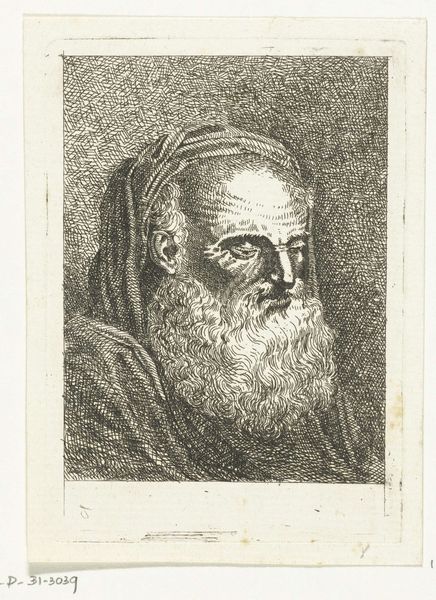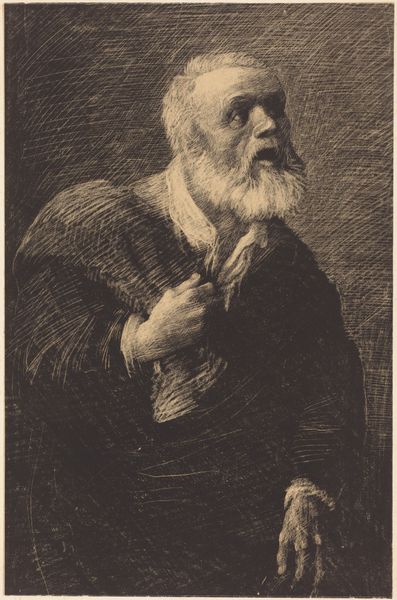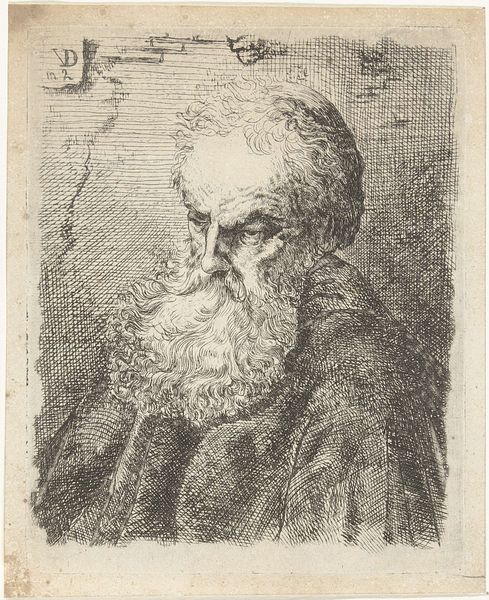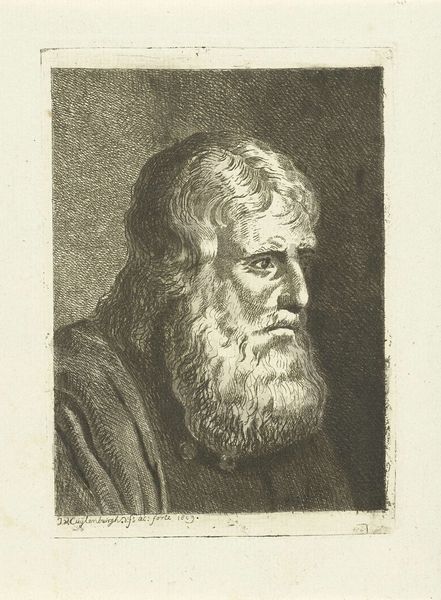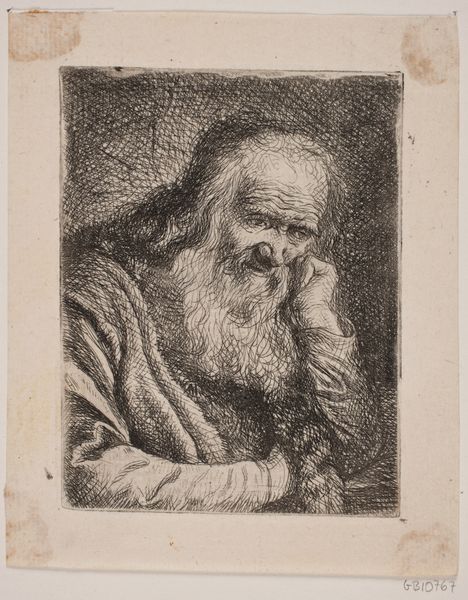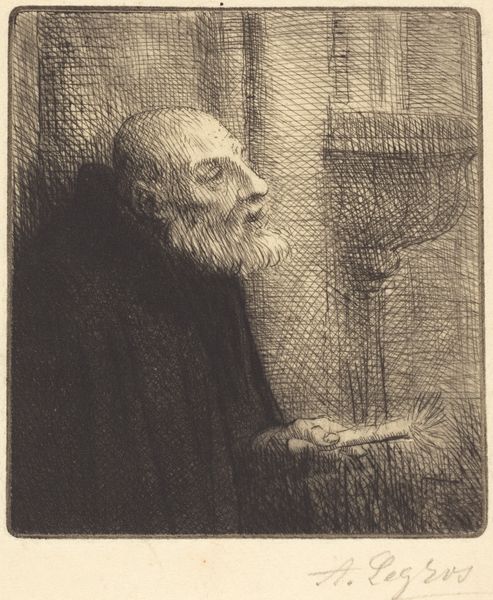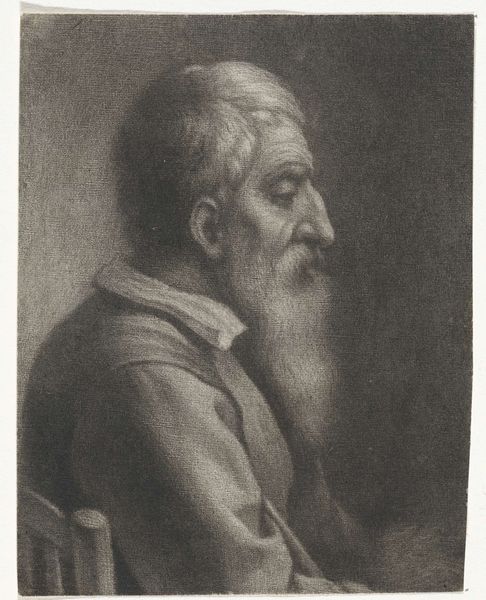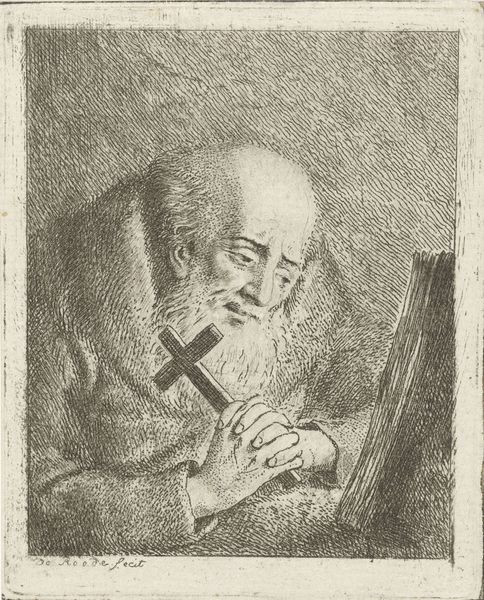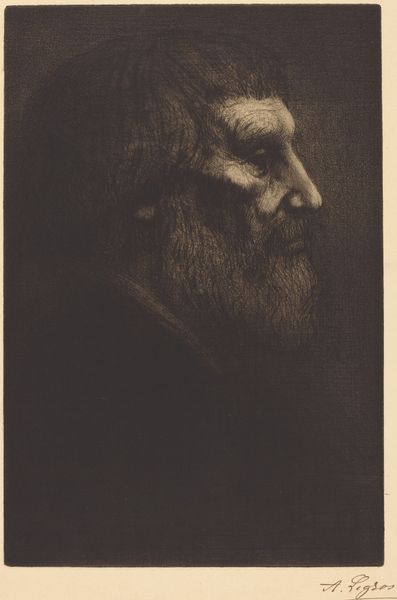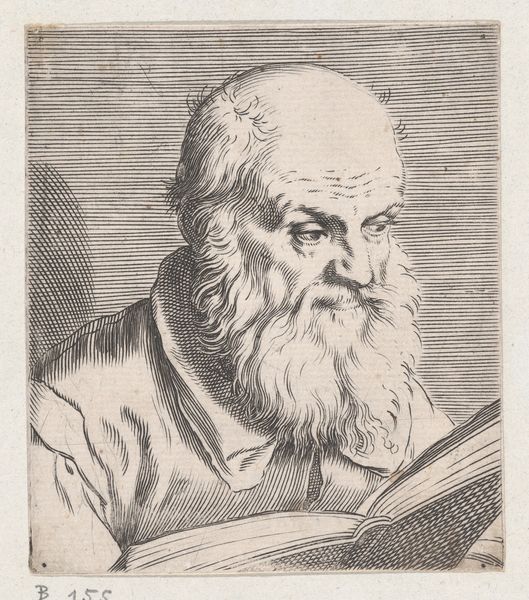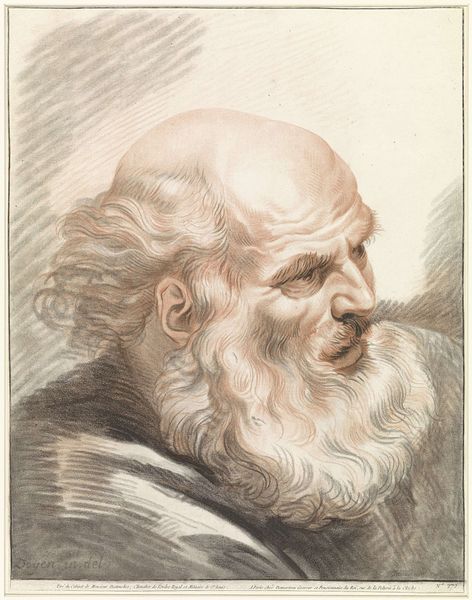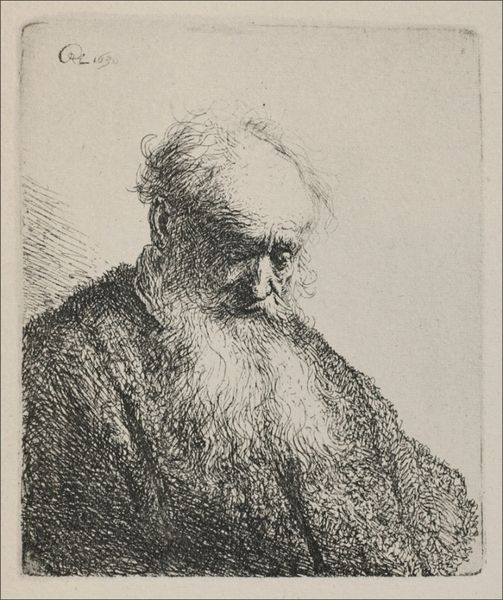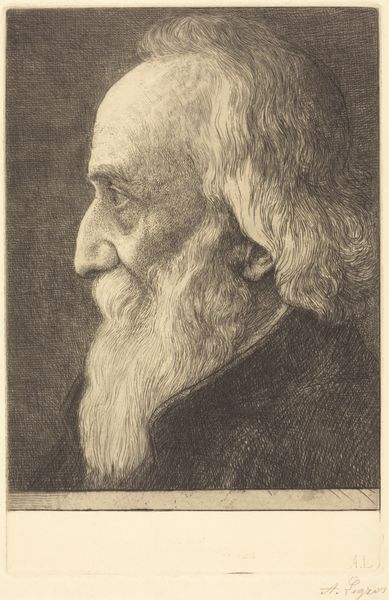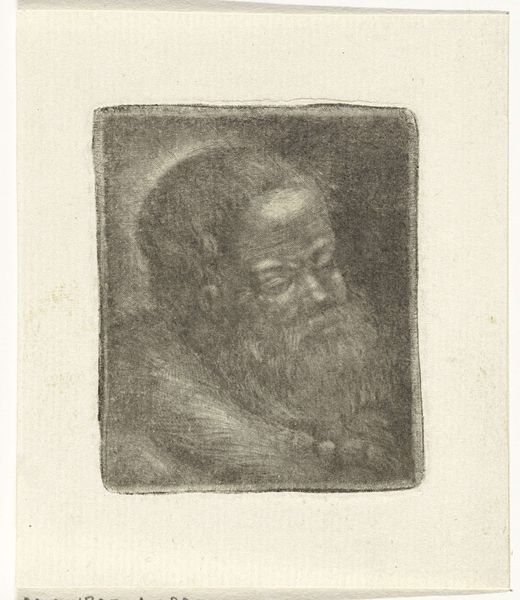
print, engraving
#
portrait
#
baroque
# print
#
old engraving style
#
figuration
#
portrait reference
#
limited contrast and shading
#
line
#
portrait drawing
#
engraving
Dimensions: height 185 mm, width 140 mm
Copyright: Rijks Museum: Open Domain
Curator: Welcome. Here in gallery 2 we have a striking engraving attributed to Salomon Savery, dating from the period 1617 to 1665, titled "Portret van een oude man met baard." Editor: Immediately, the contrast leaps out—the starkness, yet with this intricate network of lines…it feels almost tactile. The density of the beard practically vibrates. Curator: It’s fascinating how Savery achieves that density. Engraving, especially at this level, was highly skilled manual labor. Consider the socio-economic context: who could afford these prints, who was depicted, and how the printing process impacted art dissemination? Editor: Yes, but set aside the social questions for a moment; let’s look closely at that face! The way the lines follow the contours of his brow, the deeply shadowed eyes…there's such gravity in his expression. It directs our gaze inward. And, structurally, notice how the artist balanced the texture of the beard against the smooth dome of the head? Curator: I agree, there is striking composition, and Savery was not working in a vacuum, of course. He stood on the shoulders of other printmakers, learning techniques passed down through workshops and apprenticeships. The materiality of the engraving plate, the ink, the press – these all contribute to the final image. Editor: Materiality undeniably shapes the image, but so too does artistic intention. The contrast, the precise control of line—these choices guide our eye and create this deeply emotive portrait. The engraver shows an inner self. Curator: True, but who dictated the terms of that self-expression? What were the artistic conventions of the time, and how did Savery’s workshop impact his production? These external constraints define the form too. Editor: Perhaps… regardless, what matters is that Savery achieved something that transcends its material origin and constraints. The gaze of the old man transcends time, compelling reflection. Curator: Precisely, and it is the materiality and social-economic context from which it came from that offers to define its deeper meaning, especially in today's culture. Editor: Point taken. A good marriage of close viewing and historical understanding, wouldn't you agree?
Comments
No comments
Be the first to comment and join the conversation on the ultimate creative platform.
